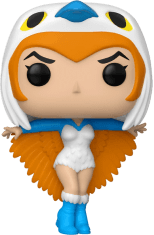It's nothing fancy—a face appears in the bathroom mirror, a figure materializes seemingly from nowhere, prompting protagonists and audiences alike to scream their heads off. But there may be more to the jump scare than most of us realize. Why else would directors—and audiences—keep coming back?
It's all but impossible to name a horror movie that doesn't use this technique at least once. Carrie, The Blair Witch Project, Jaws, Paranormal Activity, A Nightmare on Elm Street, Cat People, Psycho, Texas Chainsaw Massacre, Poltergeist, Friday the 13th and The Descent are among the countless films that rely on the jump scare to send heart rates soaring. On August 13, YouTube removed an ad for the horror movie The Nun because a viewer tweeted a warning about the intensity of the jump scare. YouTube cited its policy against “shocking content” as justification for pulling the video.
Opinions of the jump scare vary with Slash Film stating, “While they have been used masterfully, countless forgettable horror movies have leaned on them for cheap thrills, utilized as a crutch when a filmmaker doesn't know how to use atmosphere and mood to achieve the same emotions from an audience.” Sinister screenwriter C. Robert Cargill argues that for a jump scare to be effective, the director must make efficient use of misdirection, much as a good magician has her audience looking in one direction while she's pulling off her trick somewhere else entirely.
It didn't take long for video games to get in on the jump scare action capitalizing on the first-person perspective to heighten the effect. Resident Evil is frequently credited as being the first video game to utilize the technique, but it certainly wasn't the last. What, after all, is Five Nights at Freddy's if not one long, terrifying jump scare?
Indie game site Game Jolt even features a Five Nights at Freddy's 1-6 Jumpscare Simulator that boasts every single jump scare in the Five Nights at Freddy's series. You can watch Freddy wave his arms, Bonnie chomp her teeth at the camera, Foxy slide into frame, wide animatronic mouths inching toward the screen, terrifying glowing eyes piercing your very soul. To call the endless sequence of jump scares unnerving would be an understatement. Of course, it's precisely because of the jump scares that Five Nights at Freddy's live streams are so popular on Twitch.
On July 8, Twitch streamer Rhemery defeated Ultimate Custom Night in 50/20 mode—a setting that required the security guard to survive an entire night against all 50 animatronics at the highest difficulty level, which was 20—and the Twitch and YouTube gamer community went crazy sharing videos of Rhemery's run. The game's creator, Scott Cawthon, congratulated Rhemery on reddit and, eventually, a few additional gamers followed in Rhemery's footsteps. Videos of the victory are all over YouTube, racking up tens of thousands of views.
Not everyone enjoys being afraid sufficiently to seek out horror movies, video games with jump scares or haunted houses. But those that do enjoy and seek out scary forms of entertainment can credit the frontal lobe of their brain for that enjoyment. According to a Healthline article quoting Katherine Brownlowe, M.D., “The frontal lobe is the thinking part of the brain. It's the part of your brain that can modulate the more primitive response and tell you you're OK right now. So if you're in a situation like a haunted house and something jumps out at you or you hear a scary noise, your body goes into a fight or flight mode, but your frontal lobe still knows you're safe and will calm you down, allowing the situation to be more pleasurable.”
Physically, there's a distinctive and relatively consistent reaction to fear. The amygdala—an almond-shaped collection of gray matter in the cerebral hemisphere, responsible for processing emotional responses including fear—is responsible for setting off your fight or flight response, triggering sweaty palms, dilated pupils and a huge rush of dopamine and adrenaline. These physical reactions are, in fact, not all that different from a person's physical reaction to excitement, assuming you can convince your amygdala that you're not truly in danger.
Then there's the bonding factor. Being afraid in a controlled environment creates a sense of connection between people. Sociologist Margee Kerr who specializes in fear told the Independent, “Humans enjoy intense emotional experiences in groups. People go to rock concerts, to the Vatican to hear the Pope speak, to Royal Family events, and so on, to experience a sense of connectedness with others and to share intense emotions, even with strangers.”
Love ‘em or hate ‘em, jump scares probably aren't going anywhere. If you do happen to love then, hop on Twitch or YouTube to watch some sweet, sweet Five Nights at Freddy's jump scare action. And if you happen to hate them, maybe avoid watching any promotions for The Nun.







 Items in your cart may be affected with updated location.
Items in your cart may be affected with updated location.




































